Aqua Amore Blog & News
An Aqua Amore journey to Caldes de Malavella
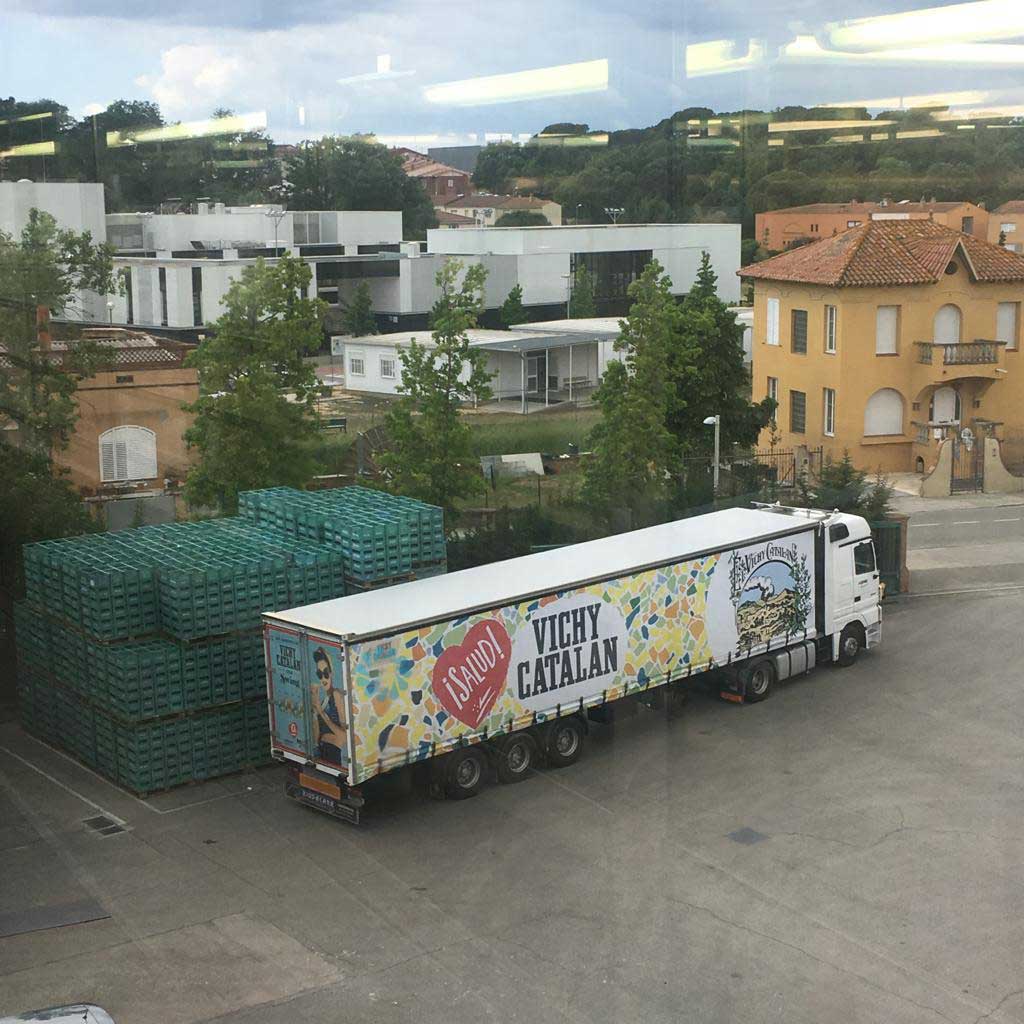
We have been thrilled that so many of you have been invigorated by Zac Efron’s Netflix show Down to Earth with Zac Effron Episode 2 and reached out to us to try many of our unique mineral waters. Please join us on a leisurely ten minute read whilst we guide you through our own visit to the source of a natural mineral water.
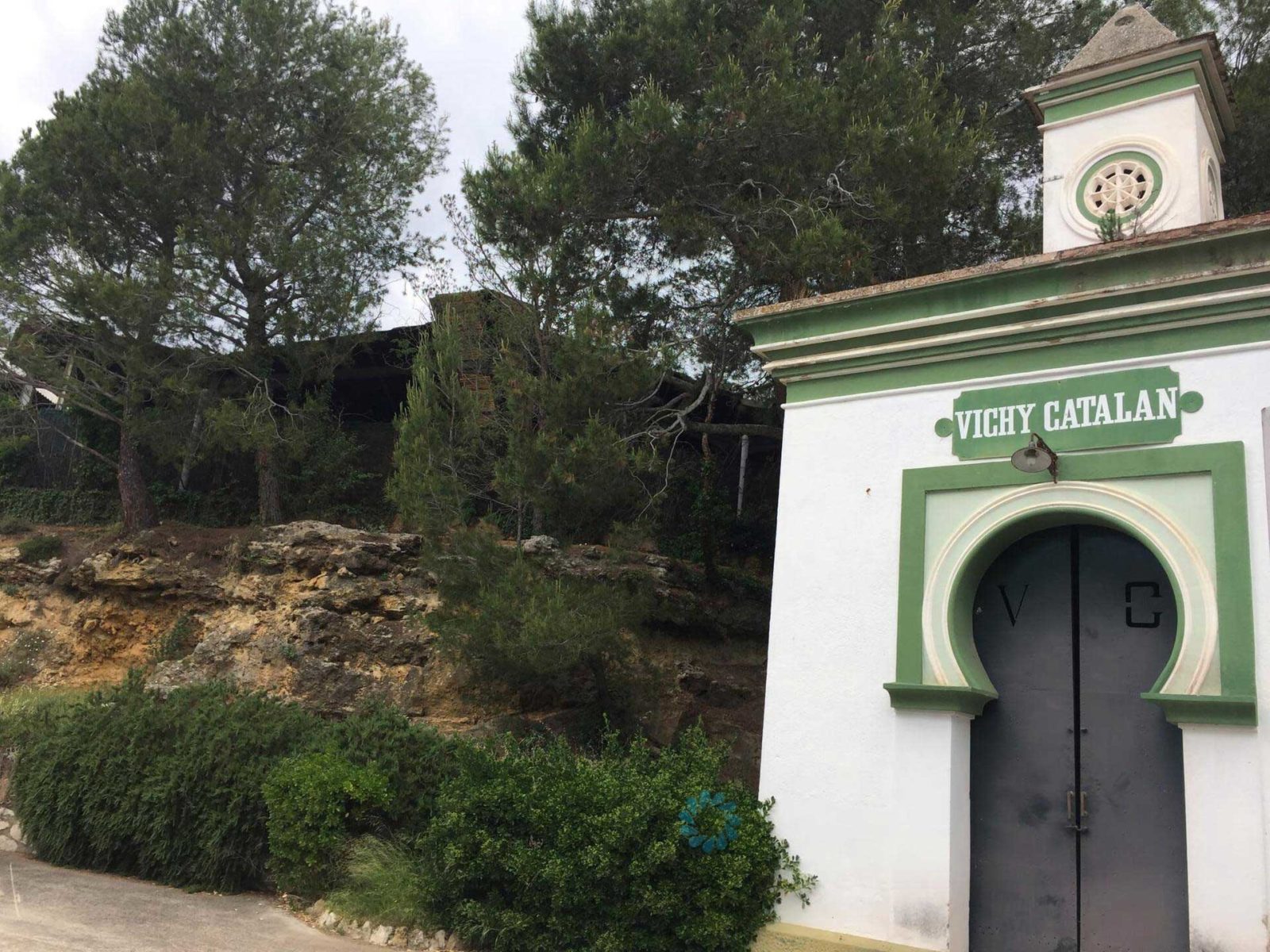
There has been a lot of recent interest in Vichy Catalan, the distinctive and beguiling water that emerges from the ancient Roman spa of Caldes de Malavella in Catalunya. This town, just South of Girona, is the source of at least three thermal water sources – one of which is supplied a Roman spa which now remains as a disused relic and is open to visitors. Another is the eponymous Malavella, a natural mineral water in a distinctive pear drop bottle which possesses a remarkably similar mineral content to Vichy Catalan – though is imbued with less CO2 hence, small bubbles.
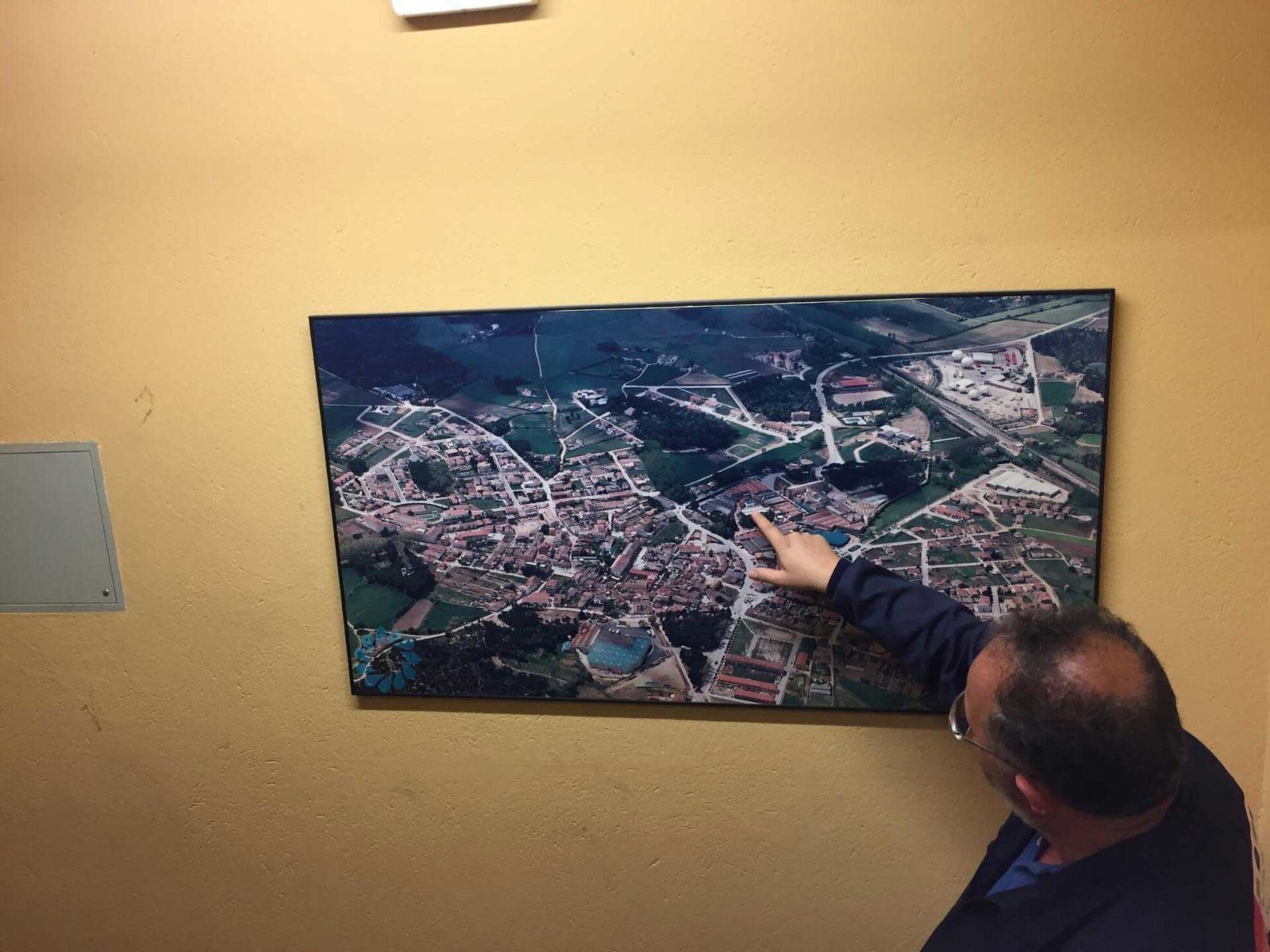
The centrepiece of this sun drenched town, however, is the Balnearia Vichy Catalan; this is the heart of the source of Vichy Catalan, a bottling plant and a hotel/spa. Christopher and I took the time to visit in May 2018, which was very exciting for us, as Aqua Amore has been a reliable source for many UK (and European!) based afficionados of this evocative brand for over a decade and for us, it has always carried a certain mystique.
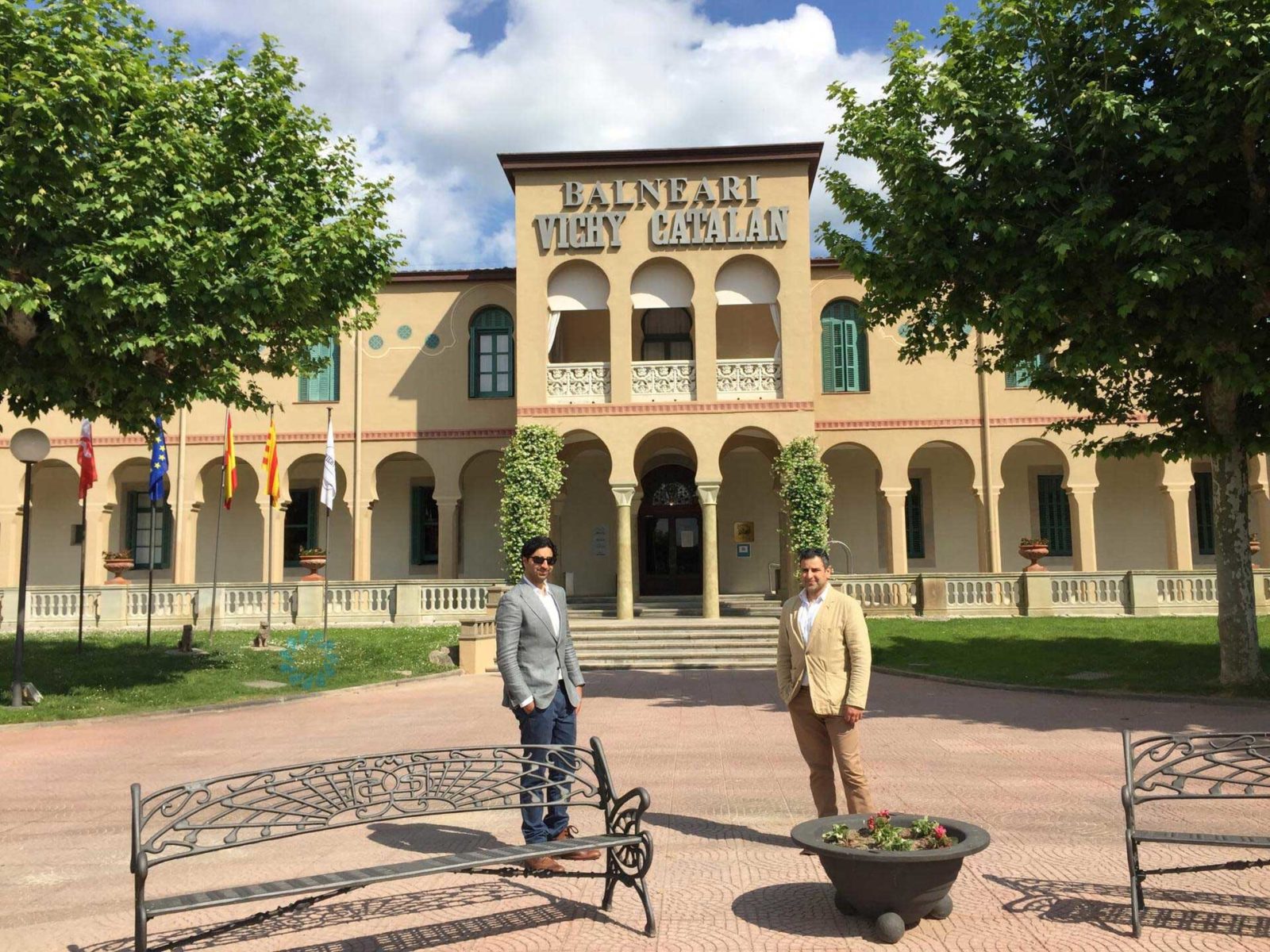
In the 19th Century, many people were ‘taking to the waters’ throughout Europe and the most renowned of these spa towns was that of Vichy, in the department of Auvergne-Rhône-Alpes in the centre of France and in a volcanic regions with an abundance of thermal springs. It is from this region that Aqua Amore source the majestic Natural Mineral Waters (NMW) of Chateldon, Vichy Celestins, Vichy St Yorre and Vals.
According to the myth of the commercial origin, Dr. Modest Furest Roca, studied the beneficial effects of highly mineralised thermal water for the human physiology. Back in his native Catalunya, the volcanic region is around Girona – a region from which we also source Sant Aniol. When he was visiting the region of Caldes de Malavella, he encountered a goat herder, who remarked that his goats would drink from a mineral spring and subsequently be full of energy and bounce around; this story isn’t too dissimilar to the origins of coffee in Ethiopia, with the curious goats chewing on the coffee berry and exhibiting the effects of the caffeine! Dr. Furest was delighted with the analysis of the water and commercialised it by adopting the moniker of ‘Vichy’, in order to establish an evocation and recognition of its provenance. Fast forward to the present day and France is not accepting of this gross usurpation of its cultural heritage and will only allow the product to be sold as ‘VCH’!
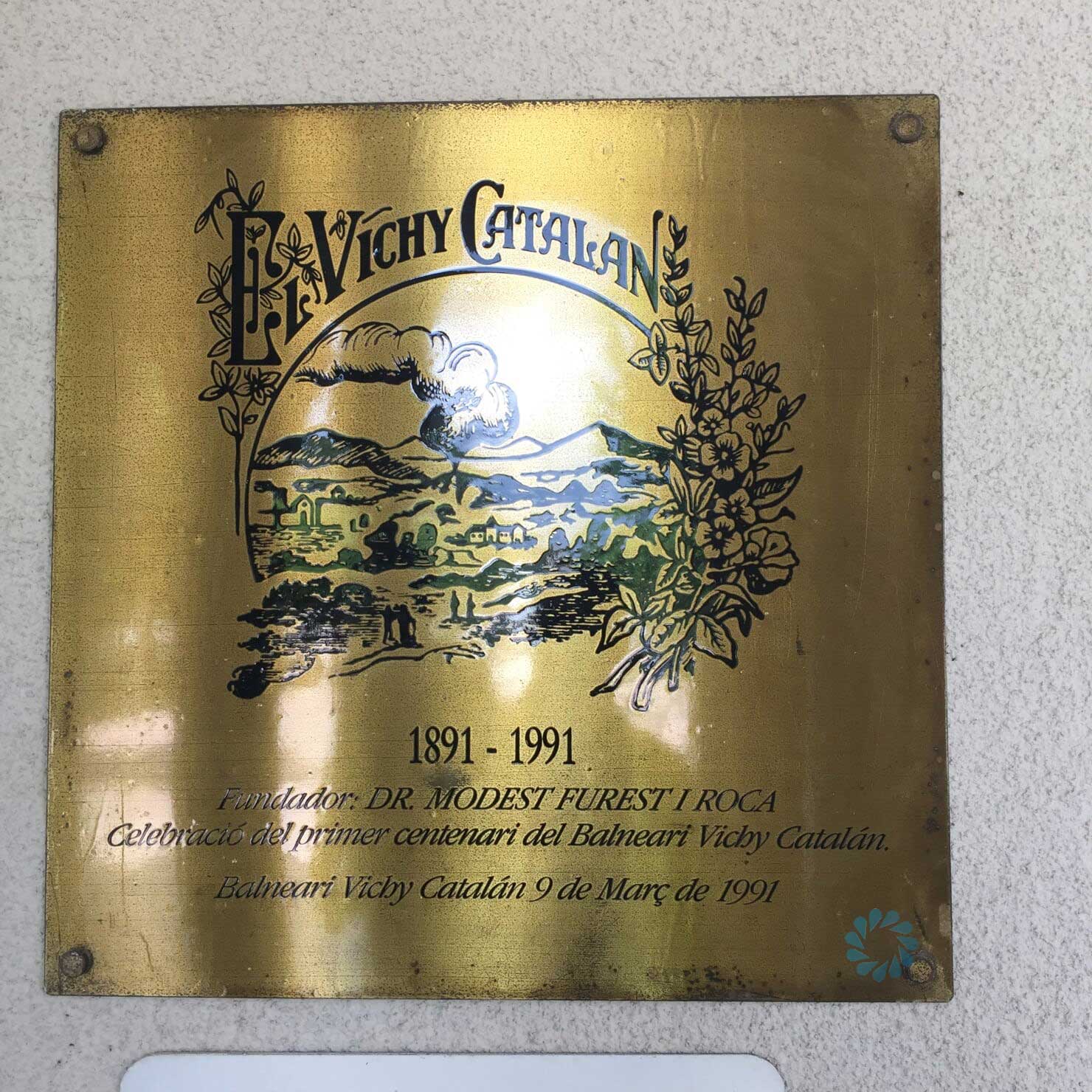
We do know for certain, that the water emerges from the spring at a stable 59°C and visibly steams upon emergence into the atmosphere, in addition to possessing a whitened appearance due to the presence of CO2. We could feel the heat from the water and tasted it – the sensation is very unusual as one is essentially consuming warm, bubbly minerals in a liquid form. It is actually very highly mineralised at 3,052 mg/L – and these are minerals that can be tasted and sensed on the palate. It is noticeably carbonated, saline (due to the sodium) and viscous (due to the bicarbonates) and it is best enjoyed very chilled.
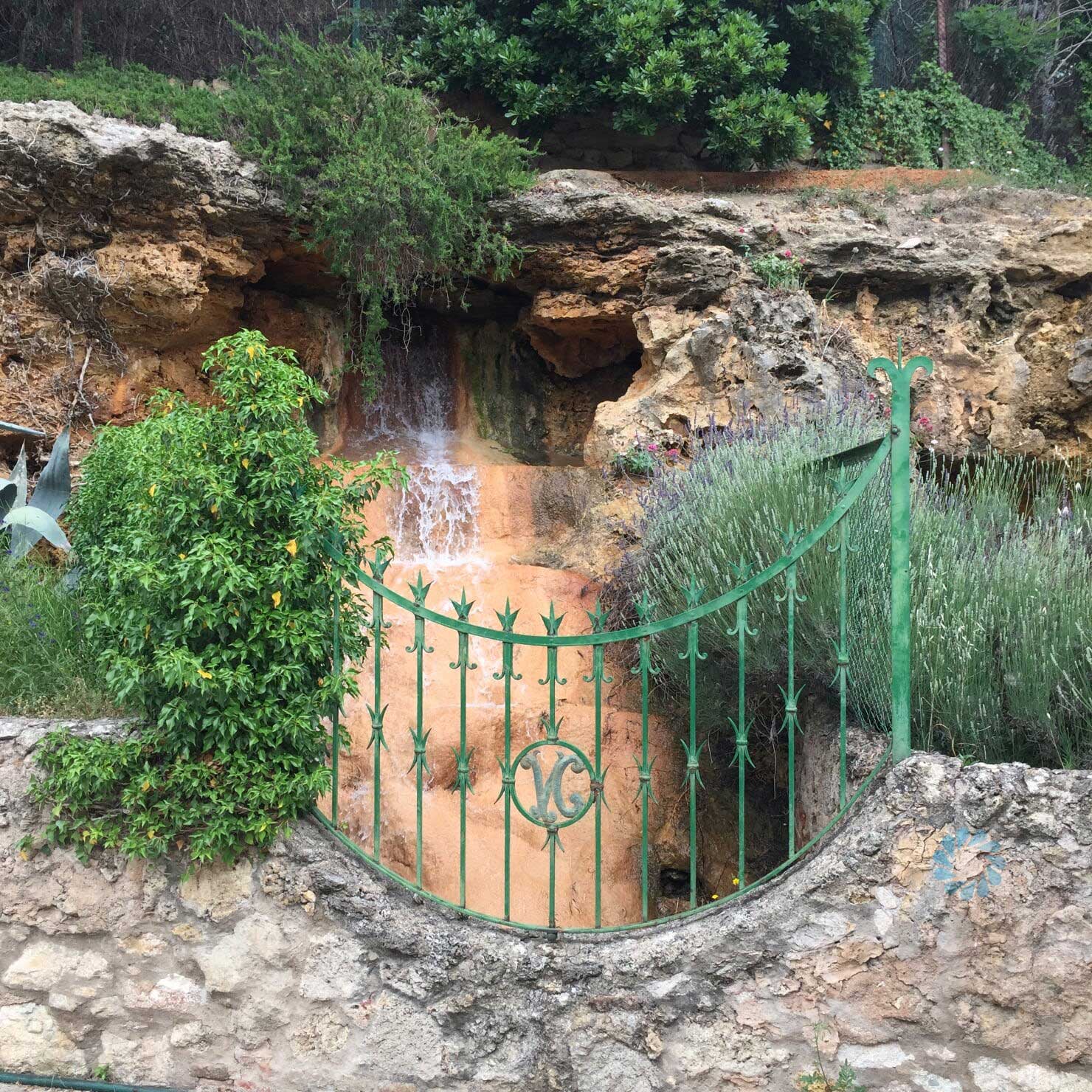
The water is captured underground and before it is bottled, it is topped up with CO2 in order to represent the character of water as it emerges from the spring, so that we can enjoy it as those knowing goats did for so many centuries. The operation itself is continuous – Vichy Catalan is the most popular sparkling water in Spain and Portugal and they have expanded to produce juices and carbonated flavours.
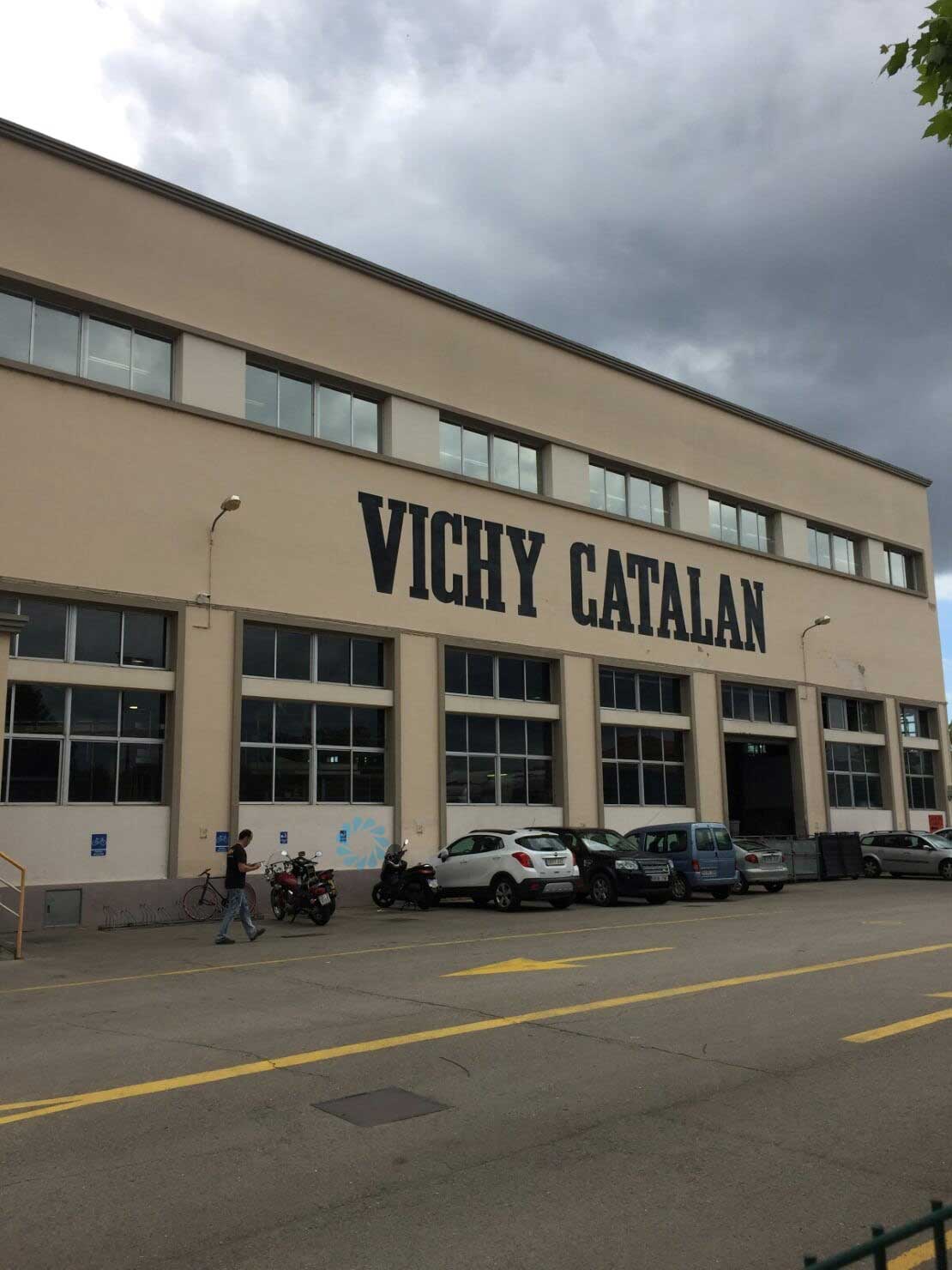
It is clear the Vichy Catalan brand is one that captures the heart and essence of Catalunya – with the adoption of the Gaudi pattern seen at Barcelona’s Parc Guell sealing its position as one of Spain’s most distinctive products.
Should you have the opportunity to visit, we would highly recommend a stay to enjoy the hospitality of the spa and dining facilities; in combination with the historic fort of Girona, it makes for a wonderful tour of a less travelled area of Catalunya. We would recommend a driving trip, starting from Perpignan and following the wonderful D914 ‘Costa Brava’ as the road clings to the cliffside and offers a glistening panorama of the Mediterranean. Passing through Cerbere and Portbou, before coming inland through Figueres and into Girona.
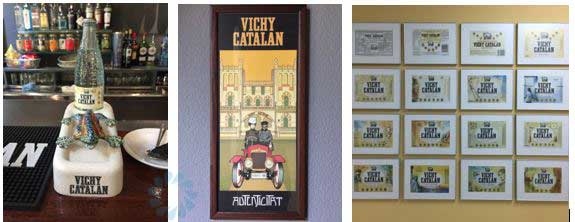
Thank you for joining us on this re-visiting of our journey and we welcome your enthusiasm, feedback and questions, as always.
– Michael Tanousis, co-founder of Aqua Amore.

 Prompt Delivery - By the case - Nationwide UK
Prompt Delivery - By the case - Nationwide UK

